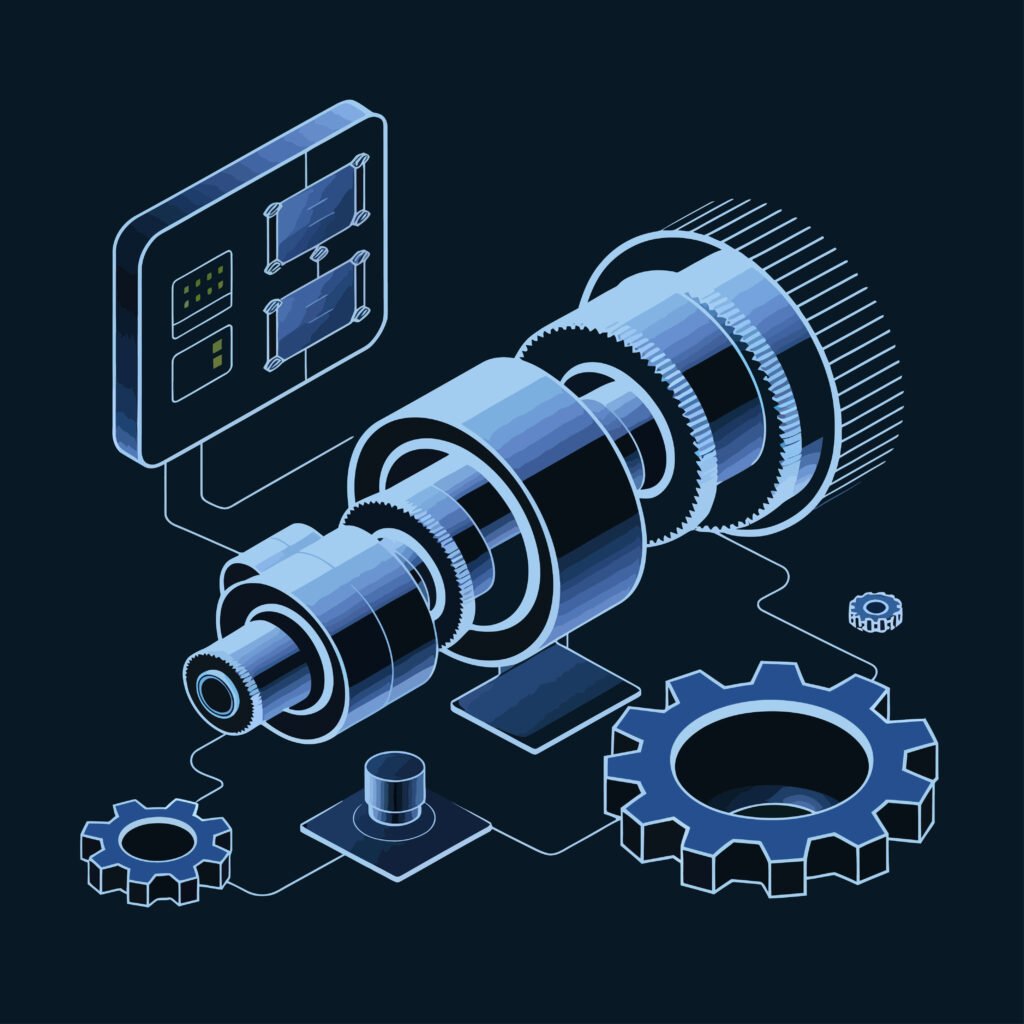
The evolution of gearboxes has been a testament to the relentless pursuit of efficiency and reliability in mechanical systems. Traditionally, gearboxes functioned as purely mechanical devices, transmitting power between components with fixed operational parameters. However, the advent of digital technology has ushered in a transformative era where gearboxes are no longer passive elements but intelligent, data-driven subsystems.
This metamorphosis is particularly significant in industries that demand high performance, unwavering reliability, and predictive capabilities. In sectors such as electric vehicles (EVs), aerospace, wind energy, and robotics, the integration of artificial intelligence (AI) and embedded sensors into gear systems has become a pivotal strategy. These intelligent gearboxes not only enhance operational efficiency but also provide critical insights into system health, enabling proactive maintenance and reducing unexpected downtimes.
What Makes a Gearbox ‘Intelligent’?
An ‘intelligent’ gearbox is characterised by the seamless integration of embedded sensors, real-time data processing units, and AI-powered analytics within the traditional mechanical framework. This amalgamation transforms the gearbox from a static power transmission component into a dynamic, responsive system capable of self-monitoring and adaptation. The embedded sensors continuously collect data on various operational parameters, which is then processed in real-time to assess the gearbox’s condition. AI algorithms analyse this data to detect patterns, predict potential failures, and recommend corrective actions. This shift from reactive to predictive and adaptive systems marks a significant advancement in mechanical engineering. Instead of adhering to predetermined maintenance schedules or responding to failures after they occur, intelligent gearboxes enable a proactive approach. They anticipate issues before they manifest, allowing for timely interventions that enhance reliability, extend service life, and optimise performance.
Key Technologies Powering Intelligent Gearboxes
Use Cases Across Industries
Benefits of Intelligent Gearboxes
The integration of intelligence into gearboxes yields several significant benefits. Firstly, it leads to increased uptime and reduced unplanned downtime. By continuously monitoring operational parameters and predicting potential failures, maintenance can be scheduled proactively, preventing unexpected breakdowns that disrupt operations. Secondly, intelligent gearboxes contribute to longer asset life through optimised maintenance. Condition-based maintenance ensures that components are serviced or replaced only when necessary, reducing wear and tear from both overuse and unnecessary interventions.
Challenges to Widespread Adoption
While intelligent gearboxes offer numerous advantages, their widespread adoption faces several challenges. Firstly, the cost and ROI justification pose a significant hurdle. The initial investment in sensors, AI systems, and integration can be substantial. Companies must evaluate whether the long-term benefits, such as reduced downtime and maintenance costs, outweigh these upfront expenses. Demonstrating a clear return on investment is crucial for stakeholders to commit to this technological shift.
Secondly, the harsh operating environments in which many gearboxes function present challenges for embedded electronics. Exposure to extreme temperatures, vibrations, and contaminants can affect sensor accuracy and longevity. Ensuring that these components are robust enough to withstand such conditions without frequent failures or recalibrations is essential for reliable operation.
The complexity of data handling and cybersecurity concerns also cannot be overlooked. Intelligent gearboxes generate vast amounts of data that need to be processed and stored securely. Implementing systems capable of real-time data analysis while safeguarding against cyber threats requires sophisticated infrastructure and protocols. Protecting sensitive information from unauthorised access is paramount, especially as connectivity increases.
Lastly, integration with legacy systems presents a significant challenge. Many industries operate with existing machinery that lacks the capability to interface seamlessly with modern intelligent components. Retrofitting these systems or ensuring compatibility can be complex and costly, often requiring customised solutions to bridge the technological gap.
The Way Forward
To overcome these challenges and facilitate the adoption of intelligent gearboxes, several strategies can be employed. Developing modular smart components for retrofitting offers a practical solution for integrating intelligence into existing systems. By designing sensors and processors that can be added to current gearboxes, companies can enhance functionality without the need for complete overhauls, making the transition more cost-effective.
Integration with Industry 4.0 ecosystems is another critical step. Ensuring that intelligent gearboxes can communicate effectively within a connected factory environment allows for streamlined operations and data sharing across various platforms. This connectivity enhances overall system efficiency and enables more informed decision-making processes.
Establishing standardisation of protocols and interoperability is essential for widespread adoption. Developing universal standards ensures that components from different manufacturers can work together seamlessly, reducing compatibility issues and fostering a more collaborative industry environment.
Finally, building in-house digital capabilities within gearbox OEMs is vital. Investing in training and developing expertise in AI, data analytics, and sensor technology equips companies with the necessary skills to innovate and maintain intelligent systems. This internal competency accelerates development and implementation processes, positioning companies competitively in the market.
Conclusion
Intelligent gearboxes represent a significant advancement in mechanical engineering, transforming traditional components into proactive, data-driven systems. By integrating AI and embedded sensors, these gearboxes offer enhanced performance, predictive maintenance capabilities, and operational efficiency. Despite challenges related to cost, environmental conditions, data management, and system integration, strategic approaches such as modular retrofitting, embracing Industry 4.0, standardisation, and developing digital expertise can pave the way for broader adoption. As industries continue to evolve towards automation and digitalisation, intelligent gearboxes will play a crucial role in driving smarter, more reliable operations.
